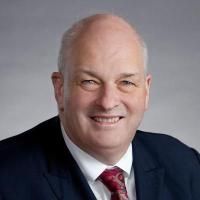Predictors of pelvic tilt normalization: a multicenter study on the impact of regional and lower-extremity compensation on pelvic alignment after complex adult spinal deformity surgery.
Date
2024-01
Journal Title
Journal ISSN
Volume Title
Repository Usage Stats
views
downloads
Citation Stats
Abstract
The objective was to determine the degree of regional decompensation to pelvic tilt (PT) normalization after complex adult spinal deformity (ASD) surgery. Operative ASD patients with 1 year of PT measurements were included. Patients with normalized PT at baseline were excluded. Predicted PT was compared to actual PT, tested for change from baseline, and then compared against age-adjusted, Scoliosis Research Society-Schwab, and global alignment and proportion (GAP) scores. Lower-extremity (LE) parameters included the cranial-hip-sacrum angle, cranial-knee-sacrum angle, and cranial-ankle-sacrum angle. LE compensation was set as the 1-year upper tertile compared with intraoperative baseline. Univariate analyses were used to compare normalized and nonnormalized data against alignment outcomes. Multivariable logistic regression analyses were used to develop a model consisting of significant predictors for normalization related to regional compensation. In total, 156 patients met the inclusion criteria (mean ± SD age 64.6 ± 9.1 years, BMI 27.9 ± 5.6 kg/m2, Charlson Comorbidity Index 1.9 ± 1.6). Patients with normalized PT were more likely to have overcorrected pelvic incidence minus lumbar lordosis and sagittal vertical axis at 6 weeks (p < 0.05). GAP score at 6 weeks was greater for patients with nonnormalized PT (0.6 vs 1.3, p = 0.08). At baseline, 58.5% of patients had compensation in the thoracic and cervical regions. Postoperatively, compensation was maintained by 42% with no change after matching in age-adjusted or GAP score. The patients with nonnormalized PT had increased rates of thoracic and cervical compensation (p < 0.05). Compensation in thoracic kyphosis differed between patients with normalized PT at 6 weeks and those with normalized PT at 1 year (69% vs 35%, p < 0.05). Those who compensated had increased rates of implant complications by 1 year (OR [95% CI] 2.08 [1.32-6.56], p < 0.05). Cervical compensation was maintained at 6 weeks and 1 year (56% vs 43%, p = 0.12), with no difference in implant complications (OR 1.31 [95% CI -2.34 to 1.03], p = 0.09). For the lower extremities at baseline, 61% were compensating. Matching age-adjusted alignment did not eliminate compensation at any joint (all p > 0.05). Patients with nonnormalized PT had higher rates of LE compensation across joints (all p < 0.01). Overall, patients with normalized PT at 1 year had the greatest odds of resolving LE compensation (OR 9.6, p < 0.001). Patients with normalized PT at 1 year had lower rates of implant failure (8.9% vs 19.5%, p < 0.05), rod breakage (1.3% vs 13.8%, p < 0.05), and pseudarthrosis (0% vs 4.6%, p < 0.05) compared with patients with nonnormalized PT. The complication rate was significantly lower for patients with normalized PT at 1 year (56.7% vs 66.1%, p = 0.02), despite comparable health-related quality of life scores. Patients with PT normalization had greater rates of resolution in thoracic and LE compensation, leading to lower rates of complications by 1 year. Thus, consideration of both the lower extremities and thoracic regions in surgical planning is vital to preventing adverse outcomes and maintaining pelvic alignment.
Type
Department
Description
Provenance
Citation
Permalink
Published Version (Please cite this version)
Publication Info
Dave, Pooja, Renaud Lafage, Justin S Smith, Breton G Line, Peter S Tretiakov, Jamshaid Mir, Bassel Diebo, Alan H Daniels, et al. (2024). Predictors of pelvic tilt normalization: a multicenter study on the impact of regional and lower-extremity compensation on pelvic alignment after complex adult spinal deformity surgery. Journal of neurosurgery. Spine. pp. 1–8. 10.3171/2023.11.spine23766 Retrieved from https://hdl.handle.net/10161/29921.
This is constructed from limited available data and may be imprecise. To cite this article, please review & use the official citation provided by the journal.
Collections
Scholars@Duke

Khoi Duc Than
I chose to pursue neurosurgery as a career because of my fascination with the human nervous system. In medical school, I developed a keen interest in the diseases that afflict the brain and spine and gravitated towards the only field where I could help treat these diseases with my own hands. I focus on disorders of the spine where my first goal is to help patients avoid surgery if at all possible. If surgery is needed, I treat patients using the most advanced minimally invasive techniques available in order to minimize pain, blood loss, and hospital stay, while maximizing recovery, neurologic function, and quality of life. In my free time, I enjoy spending time with my family and friends. I am an avid sports fan and love to eat. I try to stay physically fit by going to the gym and playing ice hockey.

Christopher Ignatius Shaffrey
I have more than 25 years of experience treating patients of all ages with spinal disorders. I have had an interest in the management of spinal disorders since starting my medical education. I performed residencies in both orthopaedic surgery and neurosurgery to gain a comprehensive understanding of the entire range of spinal disorders. My goal has been to find innovative ways to manage the range of spinal conditions, straightforward to complex. I have a focus on managing patients with complex spinal disorders. My patient evaluation and management philosophy is to provide engaged, compassionate care that focuses on providing the simplest and least aggressive treatment option for a particular condition. In many cases, non-operative treatment options exist to improve a patient’s symptoms. I have been actively engaged in clinical research to find the best ways to manage spinal disorders in order to achieve better results with fewer complications.

Peter Passias
Unless otherwise indicated, scholarly articles published by Duke faculty members are made available here with a CC-BY-NC (Creative Commons Attribution Non-Commercial) license, as enabled by the Duke Open Access Policy. If you wish to use the materials in ways not already permitted under CC-BY-NC, please consult the copyright owner. Other materials are made available here through the author’s grant of a non-exclusive license to make their work openly accessible.
